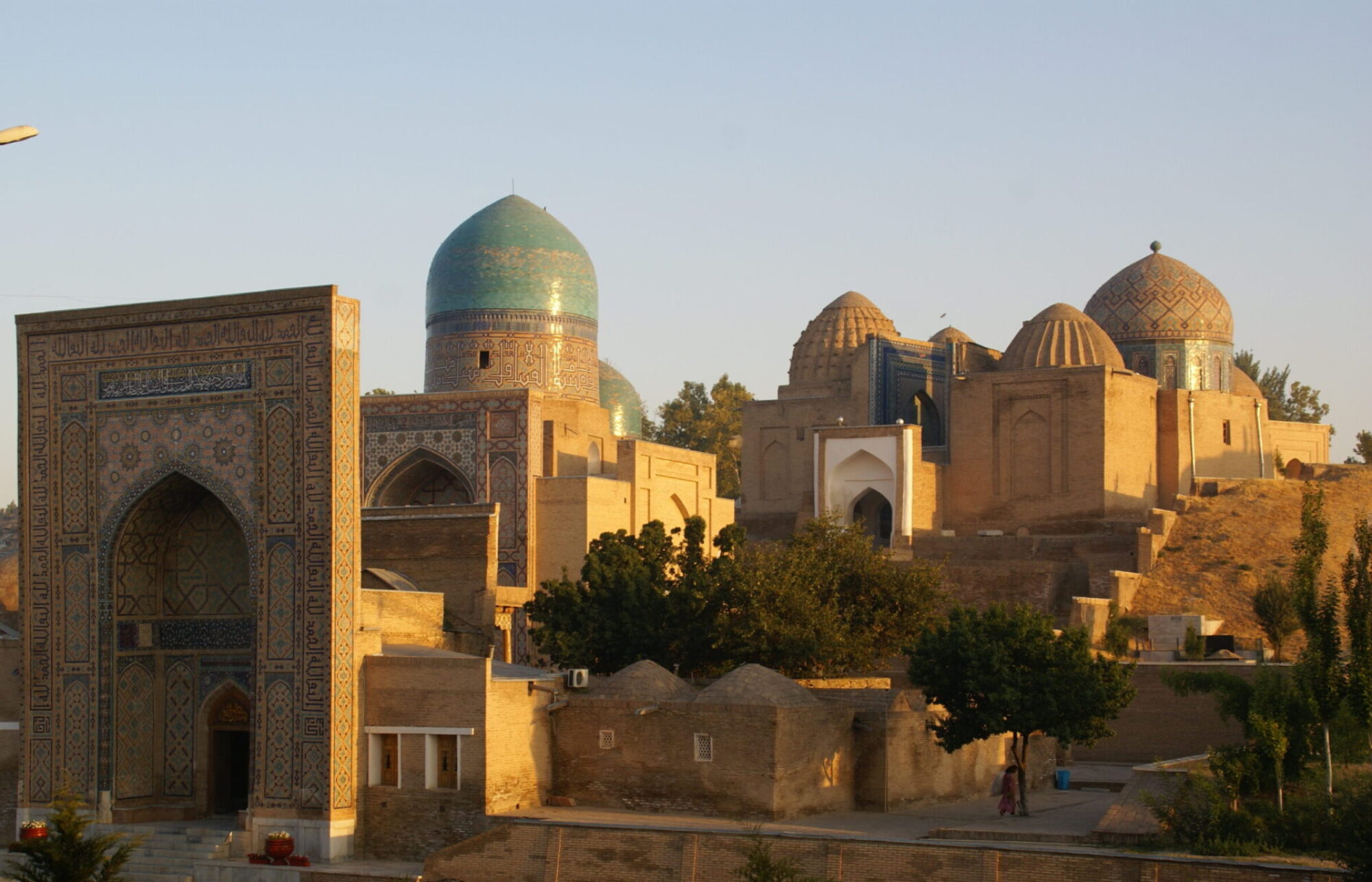The rise to importance of Persian as a language of culture and administration can be connected to the House of the Samanids in the city of Bukhara. The Samanids (819-1005) were a dynasty of Iranian descent, probably from around the city of Balkh in present-day Afghanistan, who had become powerful as governors for the ‘Abbasid Caliphate (750-1258). The ‘Abbasids, and before them the Umayyads (661-750), had brought Islam as far north as Transoxiana, ‘the lands beyond the Oxus’: in Arabic and Persian famous as Mawara an-Nahr. The Samanids were loyal governors and ruled over a semi-independent large emirate in the regions of Transoxiana, Khorasan and Khwarezm. They had acquired immense wealth through slave trade and transported Turkic nomads as slave soldiers to Baghdad, the capital of the ‘Abbasid Caliphate.
The Samanids were the first to foster and promote Persian, or rather New Persian: a language that had risen from the proverbial ashes of Islamic conquest in Transoxiana. Persian had been the language of the empire of the Sasanians, whose dynasty in Iran and beyond had fallen during the Islamic conquests in the 6th century. The Persian that emerged at the Samanid court was a new kind of Persian, written in Arabic script and with many new words originating from Arabic, fitting very well into the context of Islamic rule. The court of the Samanids attracted scholars and poets, who composed their works in Persian – the language of the poets – and Arabic, the language of religion and science. Rudaki was the first poet who left a legacy of any substance in Persian. He came from the mountains near the ancient city of Panjakent, in present days Tajikistan. His name is forever linked to the Samanid amir Nasr ibn Ahmad II, for whom he composed the following famous verses, beckoning him home to Bukhara from his summer camp:
‘The Jú-yi Múliyán we call to mind,
We long for those dear friends long left behind.
The sands of the Oxus, toilsome though they be,
Beneath my feet were soft as silk to me.
Glad at the friend’s return, the Oxus deep
Up to our girths in laughing waves shall leap.
Long live Bukhárá! Be thou of good cheer!
Joyous towards thee hasteth our Amír!’[1]
Nasr ibn Ahmad ruled from 914-943 and was the grandson of Ismail (r. 892-907), one of the most celebrated rulers of the Samanid dynasty whose mausoleum still stands in the Samanid capital Bukhara. The slave trade, key to the success of the Samanids, also caused their downfall: Turkic military slaves took over power at the end of the 10th century and established a new and very powerful dynasty in the city of Ghazna in present-day Afghanistan. Their empire was reduced in size after 1040, when they were defeated by another group of Turks, coming from the north: the Saljuqs (1038-1194), who had converted to Islam at the end of the 10th century.
Though in name subservient to the ‘Abbasid caliph, they were all-powerful rulers and staunch champions of Sunni Islam. Their empire rapidly grew and by the end of the 11th century stretched far beyond the eastern parts of the Islamic caliphate into Asia Minor, Iraq and the Levant, and across the Persian Gulf into Oman (see map 2). Their sultan Alp Arslan defeated the Byzantines at Manzikert in 1071: an important point in time, as this event initiated Turkic rule over Anatolia and the rest of Asia Minor. The Saljuqs were avid patrons of art and architecture and contributed to the development of several large urban centers, such as Isfahan, Nishapur and Marv. In Marv (Mary) the mausoleum of Sultan Sanjar (r. 1118-1157), the last of the so-called Great Saljuqs, is located.
[1] Translation E.G. Browne, Chahár Maqála, p. 54.

